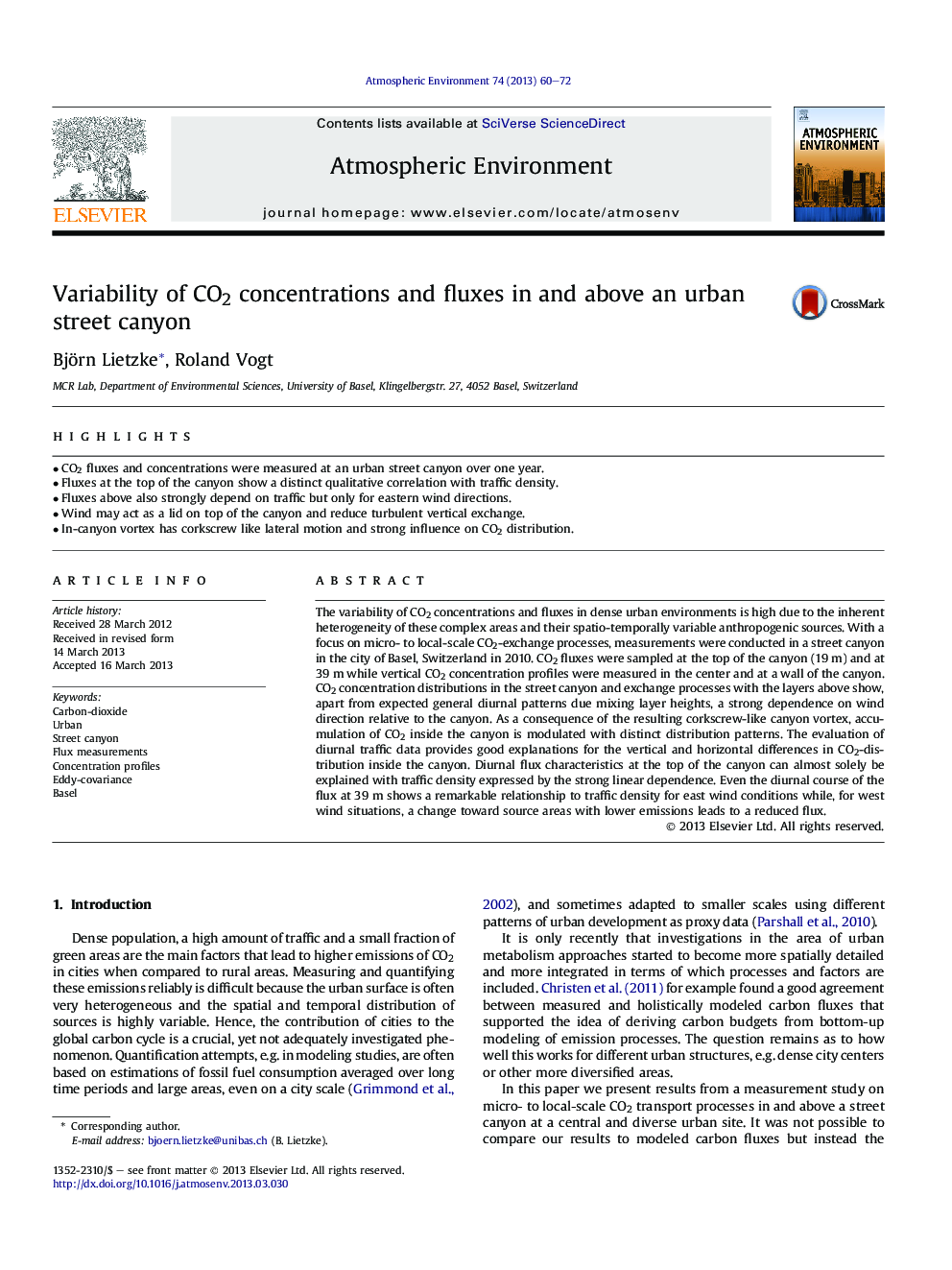| کد مقاله | کد نشریه | سال انتشار | مقاله انگلیسی | نسخه تمام متن |
|---|---|---|---|---|
| 4438175 | 1620397 | 2013 | 13 صفحه PDF | دانلود رایگان |

• CO2 fluxes and concentrations were measured at an urban street canyon over one year.
• Fluxes at the top of the canyon show a distinct qualitative correlation with traffic density.
• Fluxes above also strongly depend on traffic but only for eastern wind directions.
• Wind may act as a lid on top of the canyon and reduce turbulent vertical exchange.
• In-canyon vortex has corkscrew like lateral motion and strong influence on CO2 distribution.
The variability of CO2 concentrations and fluxes in dense urban environments is high due to the inherent heterogeneity of these complex areas and their spatio-temporally variable anthropogenic sources. With a focus on micro- to local-scale CO2-exchange processes, measurements were conducted in a street canyon in the city of Basel, Switzerland in 2010. CO2 fluxes were sampled at the top of the canyon (19 m) and at 39 m while vertical CO2 concentration profiles were measured in the center and at a wall of the canyon. CO2 concentration distributions in the street canyon and exchange processes with the layers above show, apart from expected general diurnal patterns due mixing layer heights, a strong dependence on wind direction relative to the canyon. As a consequence of the resulting corkscrew-like canyon vortex, accumulation of CO2 inside the canyon is modulated with distinct distribution patterns. The evaluation of diurnal traffic data provides good explanations for the vertical and horizontal differences in CO2-distribution inside the canyon. Diurnal flux characteristics at the top of the canyon can almost solely be explained with traffic density expressed by the strong linear dependence. Even the diurnal course of the flux at 39 m shows a remarkable relationship to traffic density for east wind conditions while, for west wind situations, a change toward source areas with lower emissions leads to a reduced flux.
Journal: Atmospheric Environment - Volume 74, August 2013, Pages 60–72